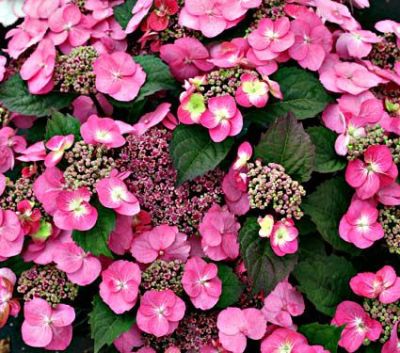 Hydrangeas are popular in New England, but you have to know what you are doing in order to have happy plants. As summer-flowering shrubs go, they are fairly easy. Summer-through-Sept bloomers. We have lots of them, even a climbing one.
Hydrangeas are popular in New England, but you have to know what you are doing in order to have happy plants. As summer-flowering shrubs go, they are fairly easy. Summer-through-Sept bloomers. We have lots of them, even a climbing one.
- South of the New Jersey latitude, Hydrangeas can handle filtered light. North of that, they need more hours of full sun to be vigorous and to produce impressive bloom.
- As their name implies, many varieties like water, mist, and fog. Good mulching prevents summer wilt if that's a problem.
- A new or transplanted Hydrangea wants plenty of water the first year. They like rich soil too. Not hard clay.
- For many varieties, you can sort-of control the color of bloom by acidifying or neutralizing the soil.
- As we have said before, for good bloom you have to know the difference between your Macrophylla and your Paniculata. It's not rocket science. I think my favorites are the Lacecaps, which are Macrophyllas.
- There are so many varietals, it is difficult to keep track of them all. GMO hybrids.
- The Oakleaf varieties seem to be the toughest, least fragile. Big white blooms, late summer.
- Many or even most varietals never want to be pruned and just want space to grow. It does not work to try to control a varietal that wants to be 15' high and 20' wide. Those big ones create their own cool, moist microclimate underneath.
- There are new dwarf hybrids which work for small borders and gardens. Can mix these types with perennials. (You can get them cheaper elsewhere via googling.)
- Excellent summary: Understanding Hydrangeas. Read it and learn.
- Photo is a Tuff Stuff lacecap, a dwarf varietal.

